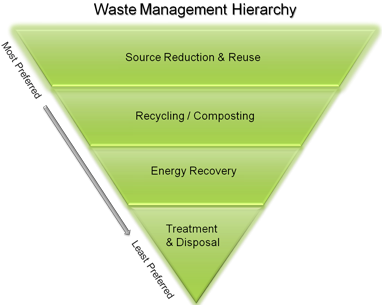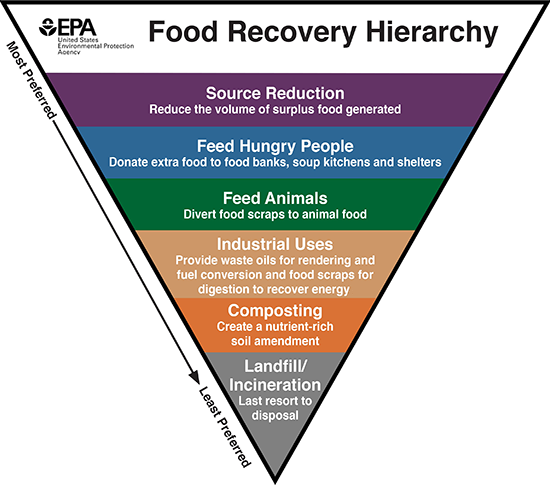Dwindling Disposal Capacity
As the northeastern United States’ disposal capacity continues to dwindle, the pressure is on legislators and regulators to address the challenge and deliver sound policy solutions. Policy in the Northeast has not caught up to suitably address the realities in waste and recycling – both from the perspective of the sheer quantity of material that needs a place to go and from an environmental safety perspective. Policies across the region sometimes prioritize, include, or exclude certain waste and recycling options without regard for current contexts and updated science. These can hinder responsive waste management systems that serve to protect the environment. We see these hurdles for landfills, which are a crucial component for a holistic waste management infrastructure in addition to reduction, reuse, and recycling. While obstacles exist for the latter components and impact the larger waste and recycling ecosystem as well, we’ll focus on the policy obstacles facing landfill disposal that are contributing to the disposal capacity shortage.

Since starting as a sustainability analyst with Casella Waste Systems (Casella) in 2018, I’ve become aware of the decreasing disposal capacity across the Northeast and become interested in how policy impacts or can impact disposal and recycling challenges. As an integrated waste management company, Casella’s waste management strategy incorporates waste reduction solutions across the contiguous United States, and collection, recycling, food waste and organics recycling, and landfill disposal across the Northeast U.S. With a holistic approach towards addressing material challenges, Casella, like other industry leaders, has a vested interest in ensuring material is responsibly managed to its end-of-life or other stage of life (reuse, recycling, etc.).
For my internship requirement I continued to work my full-time job as a sustainability analyst, however I took on policy-focused projects, something completely new to my role:
- Compiled impact reports geared for policymakers for several states that the company serves (Massachusetts, New York, Vermont, New Hampshire, and Maine), in order to highlight the company’s contribution to each state’s waste and recycling infrastructure.
- Analyzed state-level waste policies and found opportunities for Northeast states to update their policies to the benefit of the environment, climate-change mitigation, and addressing the region’s disposal capacity shortage. To this end, I drafted policy positions in order to communicate ways in which certain policies could be revisited to promote better waste and recycling infrastructure in the Northeast. One of these policy positions advocated for an updated waste management hierarchy that takes into consideration current contexts, science, and technologies, like landfill gas to energy.
Communicating Clearly
During my time compiling the data for the state impact reports, I was reminded of the common refrain that how data is presented is critical. Despite a clear-cut deliverable – two pages or less of our impact to waste and material, jobs, communities, economics, and a short qualitative story on our impact – it took more time than I had expected. I had not anticipated how much time I would spend with colleagues on ensuring that the data was communicated clearly and concisely. Telling the waste management story well to policymakers is vital due to decreasing disposal capacities and a constantly changing waste and recycling landscape subject to the whims of the global economy.
Stale Policy
My work on policy positions demonstrated to me how waste policies can become outdated if they are not revisited with an eye for the latest science and contexts. This was abundantly clear with respect to state waste hierarchy policies, most of which have little alignment with the U.S. Environmental Protection Agency’s (EPA) waste and food recovery hierarchies – ones that are current to the last 5 years.


Not a single waste law or policy across six states – Massachusetts, New York, Vermont, New Hampshire, Maine, and Pennsylvania – mentions landfill gas to energy in the hierarchy. It is not surprising given that some of these laws haven’t been updated in decades – Pennsylvania’s was last updated in 1988! Additionally, several of the states place landfilling (without gas to energy) as the lowest option as opposed to incinerating (without energy). All this, despite that the latest research amongst the staunchest zero waste advocates (Energy Justice Network, Zero Waste International Alliance, Post-Landfill Action Network) recognizes that landfilling is a higher and better environmental option than incinerating.

Given such resounding consensus, in my waste hierarchy policy position I advocate for states to update their waste laws and waste policy guidelines to align with the EPA’s hierarchy. Such a move would position landfill expansion as a potential tool in the toolbox for addressing the region’s disposal capacity shortage. Given the region’s current waste laws and policies, landfill is barely in the toolbox, despite being the better disposal option. Updates to laws and policies would simultaneously ensure that the safest disposal options – landfill with gas to energy and then landfilling – are prioritized before other harmful disposal options, such as incineration.
Responding to the Current
Through my policy work, I learned that it is imperative that policy keeps up with an ever-changing society, where global events and trends can shift entire moods, behaviors, and have economic ramifications on the other side of the planet. This includes the challenges of waste and recycling, which for too long have not been substantially revisited, often going unseen, until nexus events send ripple effects across the globe. However, my policy work illustrated to me that the Northeast’s disposal capacity challenge is one that is not only glaring, but incredibly manageable. If the region’s policymakers update waste policy to address the current challenge, they can avoid the Northeast sending out disruptive waves.
